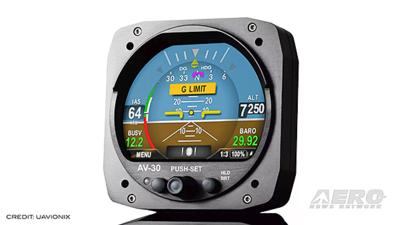Sun, Aug 01, 2021
The Lost Children
By Gene Yarbrough
As a member of a fractional ownership flying club, we find ourselves in a certain predicament with our 1972 PA28-180. The bird is equipped with a Piper Autocontrol II autopilot (which is a Century III unit rebranded for Piper), and mechanical Attitude indicator and directional gyro, both of which are getting tired and sometimes act erratic.

We would like to install one of the several available drop in solid-state electronic AI and DG. However, we do not want to lose the functionality of our autopilot, which despite its age is still working perfectly fine. As we search for suitable and affordable options, we have found a major issue with what is available in industry.
Only 2 avionix manufacturers support the Century III/Piper autopilot, Aspen and Garmin. As a result the club is faced with investing on the order of $10k on an airplane that is only worth $50k at best. This is not a financially practical argument as the money invested will not equitably enhance the value of the airplane, yet some solution must be found. Even replacing the gauges with mechanical units poses some $5000 investment, but does not give any enhanced features or reliability preferred in the electronic units.
One would think technology this old would be well understood and with a market of 10’s of thousands of units as potential customers it would make business sense to support this particular platform. There is more to the story than meets the eye.
Airventure is the perfect opportunity to approach these instrument manufacturers to understand why this particular autopilot is not supported. Technical representatives at several of the respective instrument producers including uAvionix, Dynon, and Avidyne said nearly the same thing regarding the Century Autopilots, the input required to activate them is not easily converted from the newer digital instruments. The Century units require an AC input signal, whereas Garmin and Aspen offer converter boxes, the other manufacturers have not, and therefore cannot support the Century units. It would seem this is a rather small complication, and would be a justified development project given the potential market.
Certainly many other aircraft owners find themselves in a similar situation. Perhaps the companies competing in this market will realize the potential and offer a solution. Maybe some electronics savvy person out there reading this can gin up a converter box, maybe a new business opportunity?
More News
Pilot Applied Full Aft Stick And Nose-Up Trim, But The Airplane Remained On The Runway Analysis: The pilot reported that a preflight inspection and flight control checks revealed n>[...]
A Few Questions AND Answers To Help You Get MORE Out of ANN! 1) I forgot my password. How do I find it? 1) Easy... click here and give us your e-mail address--we'll send it to you >[...]
From 2022 (YouTube Edition): Before They’re All Gone... Humankind has been messing about in airplanes for almost 120-years. In that time, thousands of aircraft representing i>[...]
Advanced Air Mobility (AAM) A transportation system that transports people and property by air between two points in the NAS using aircraft with advanced technologies, including el>[...]
Aero Linx: MQ-1B Predator The MQ-1B Predator is an armed, multi-mission, medium-altitude, long-endurance remotely piloted aircraft that is employed primarily as an intelligence-col>[...]
 NTSB Final Report: Douglas A-4K
NTSB Final Report: Douglas A-4K ANN FAQ: Q&A 101
ANN FAQ: Q&A 101 Classic Aero-TV: PBY Catalina--From Wartime to Double Sunrise to the Long Sunset
Classic Aero-TV: PBY Catalina--From Wartime to Double Sunrise to the Long Sunset ANN's Daily Aero-Term (07.01.25): Advanced Air Mobility (AAM)
ANN's Daily Aero-Term (07.01.25): Advanced Air Mobility (AAM) ANN's Daily Aero-Linx (07.01.25)
ANN's Daily Aero-Linx (07.01.25)



